#abies nordmanniana
Text
Nordmann Fir Care: Everything You Need to Know
Nordmann Fir Care: Everything You Need to Know
Nordmann Fir ‘Golden Spreader’ is a fine evergreen conifer specimen, with soft green foliage that turns golden yellow in winter.
Botanical Name
Abies nordmanniana ‘Golden Spreader’
Common Name
Nordmann Fir
Plant Type
Perennial
Flower Color
Does not produce flowers
Size When Mature
36 inches
Bloom Time
N/A
Sun Requirements
Partial shade
USDA Hardiness Zones
4 to 6
Soil PH Range
Neutral,…

View On WordPress
0 notes
Photo
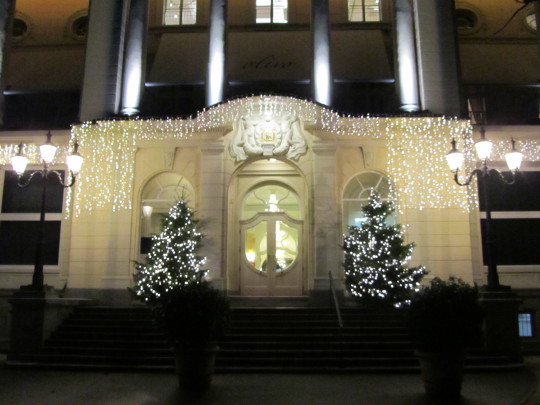
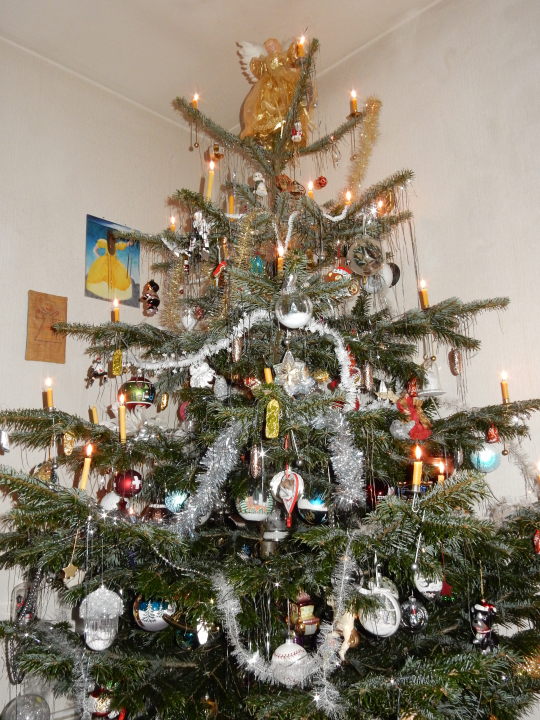

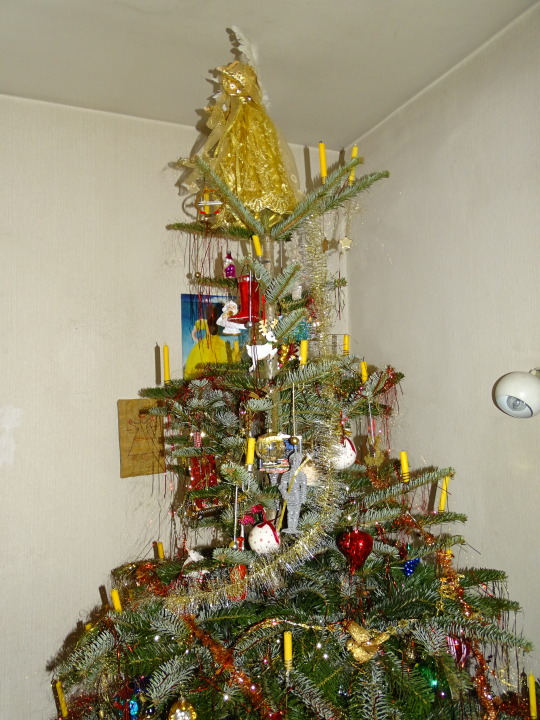
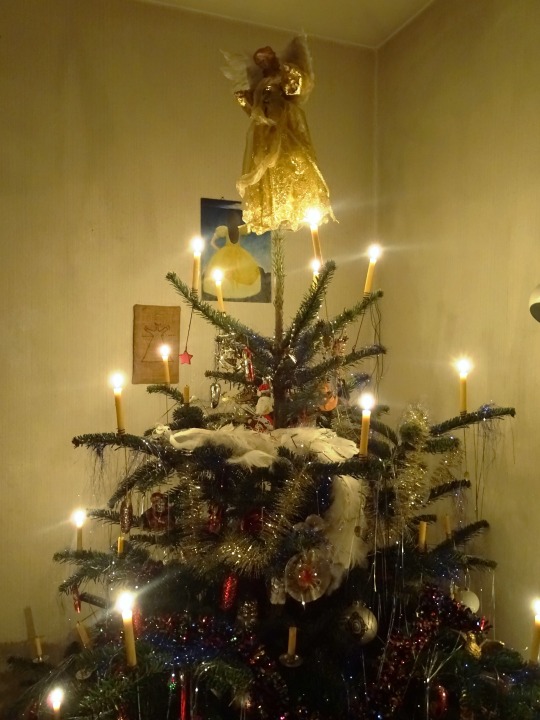
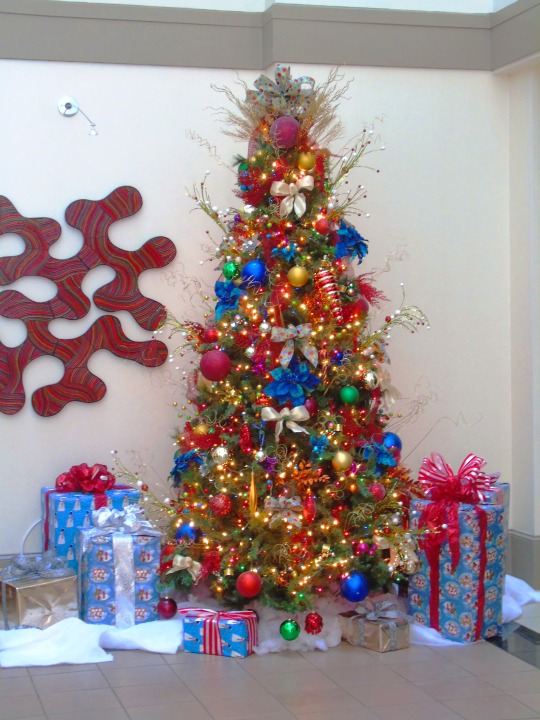
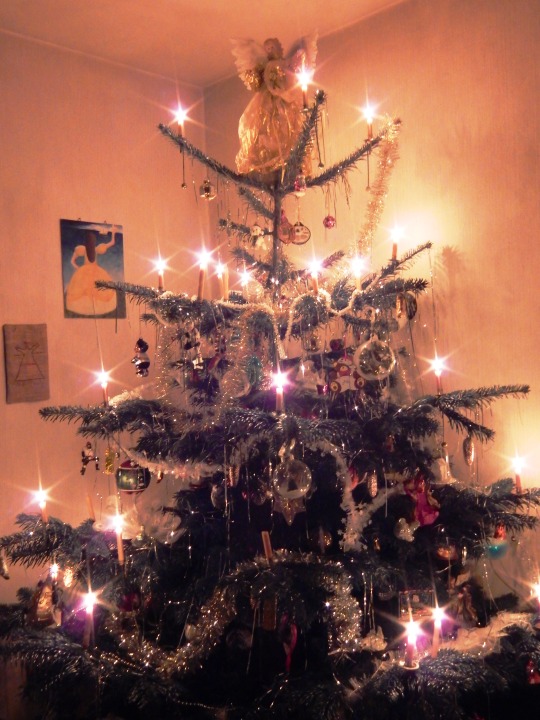



Look For An Evergreen Day
Look for an Evergreen Day can be about one of two things. On one hand, it can be a day for going out into nature and finding evergreen trees to admire. It raises awareness about their beauty and is for learning about different types, like spruces, firs, and pines. On the other hand, it can be a day to look for and cut down evergreens to be used as Christmas trees. Many people have already cut theirs down, but for those who haven't who still plan to, they have just six days left until Christmas.
The roots of the Christmas tree tradition go back to ancient pagan holidays. Pagans decorated their homes with evergreen branches during the Winter Solstice, to remind them that spring wasn't too far away. Some pagans worshipped trees as well. In ancient Rome, temples were decorated with evergreens during Saturnalia, a December holiday. Eventually, Christians began associating Christ's birth with the winter holidays and adopted the evergreen tree, which they saw as a symbol of eternal life.
Christmas trees came about in western Germany. There was a German medieval play about Adam and Eve that featured a "paradise tree," a fir tree hung with apples that represented the Garden of Eden. Germans began putting paradise trees up in their homes on Christmas Eve, the religious feast day of Adam and Eve. Besides apples, they decorated their trees with wafers, and then cookies, which symbolized Holy Communion. Candles were also added, symbolizing Christ as the light of the world. Germans also had "Christmas pyramids." Made of wood and shaped like pyramids, they held Christmas figurines and were decorated with candles, evergreens, and a star. By the sixteenth century, the Christmas pyramid and paradise tree were merged together to form the Christmas tree.
German Lutherans embraced the custom of the Christmas tree—it was widespread by the eighteenth century and considered tradition by the nineteenth century. Christmas trees gained in popularity around the English-speaking world—including in the United States—with the release of a sketch of Queen Victoria and her family next to a Christmas tree in their home in the 1840s. Victoria's husband, Prince Albert, had been born in Germany.
Christmas trees were introduced to the American colonies during the seventeenth century. At that time, they were looked at with suspicion by many Christians there. Some, like the Puritans, saw them as "heathen traditions." German and Irish immigrants to America helped to popularize Christmas trees there in the mid-nineteenth century. Other countries where they were popular at that time include Poland, Switzerland, the Netherlands, and Austria. Western missionaries brought them to Japan and China in the nineteenth and twentieth centuries.
Christmas trees are used as both outdoor and indoor decorations and are often adorned with lights, ornaments, tinsel, and garland. Blown-glass ornaments, many being made in small workshops in Germany and Bohemia, were being sold in Britain and the United States by the 1870s. Strings of electric lights were being sold a few decades later. Presents are often placed around Christmas trees to be opened on Christmas Eve or Christmas Day.
The most common trees used for Christmas trees are blue spruce, Douglas fir, balsam fir, Scots pine, white pine, noble fir, and Fraser fir. Somewhere around 30 million real trees are cut down each year in the United States to be used as Christmas trees. Most of them are grown on tree farms, where about 350 million trees are currently growing. In addition to real trees, around 10 million artificial trees are sold each year in the United States. The first artificial Christmas trees were made in the 1880s in Germany, and started being manufactured as part of an effort to fight deforestation. Early artificial trees were made of goose feathers that were dyed green and then attached to wire branches, which were then attached to trunks made of dowel rods. In the 1930s, artificial trees in the United States started being made with brush bristles, and by the 1950s and 1960s, many were being made of aluminum or PVC plastic. Artificial trees have become more popular in recent years and are now mainly made of PVC plastic.
Various groups in different parts of the world put up Christmas trees at different times. German tradition says that Christmas trees should be put up on December 23rd or Christmas Eve, and need to be down by January 5th—Twelfth Night of Christmas. These dates for putting up the tree align closely with Evergreen Day, being just four or five days after it. In predominantly Catholic countries such as Argentina, Italy, and Ireland, Christmas trees are often put up on December 8th, which is Immaculate Conception Day. They are often taken down on January 6th—Epiphany, or on February 2nd—Candlemas. Christmas trees are often also put up in public places such as town squares. Each year a Christmas tree is put up in Rockefeller Center in New York City, and the National Christmas Tree is lit outside of the White House.
How to Observe Look for an Evergreen Day
You could celebrate Look for an Evergreen Day in the following ways:
Go into nature and look for evergreens; see how many kinds you can find and choose which ones are your favorite.
Pick up a book about evergreens so you can learn more about them.
Go to a Christmas tree farm and look for a tree to cut down. You could also cut one down on land where you've been given permission to do so. Then put up your tree!
Source
#Look For An Evergreen Day#LookForAnEvergreenDay#19 December#travel#Atlanta#hotel#Christmas in July#Xmas#Christmas Tree#Schweiz#USA#Switzerland#Nordmann fir#Abies nordmanniana#real tree#real beewax candles#christmas tree ornament#tree topper#indoors#outdoors#Luzern#Lucerne#original photography#vacation
2 notes
·
View notes
Photo


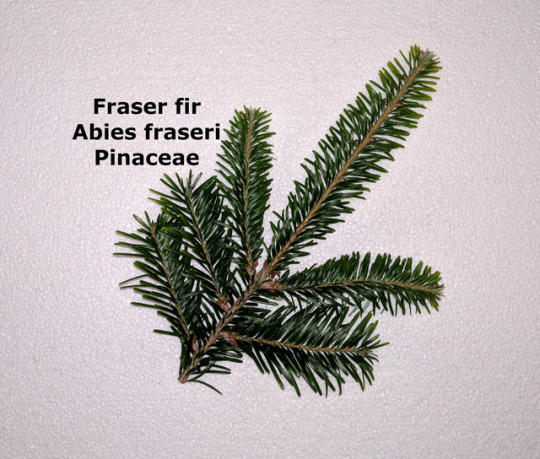
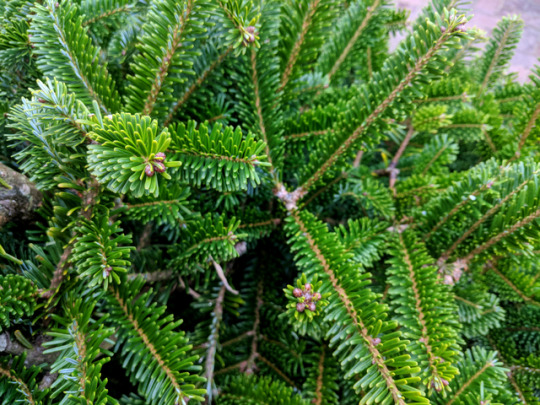
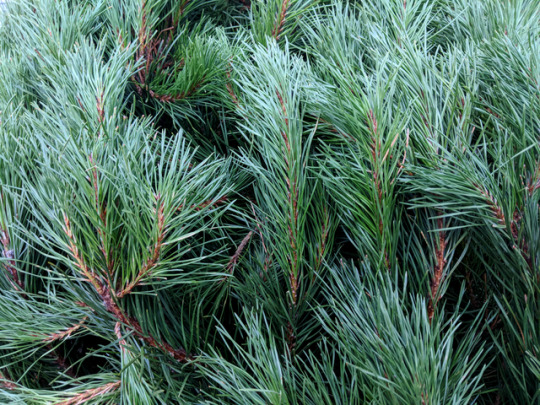

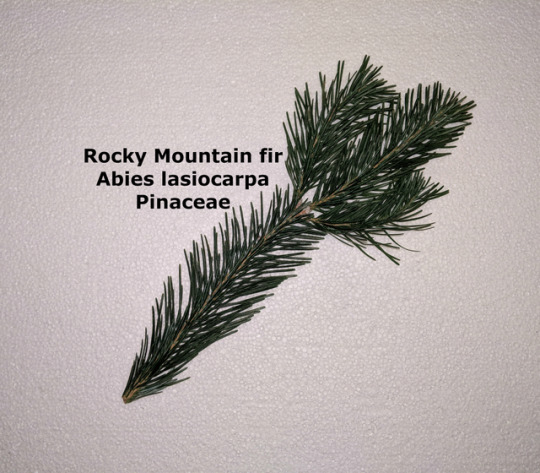

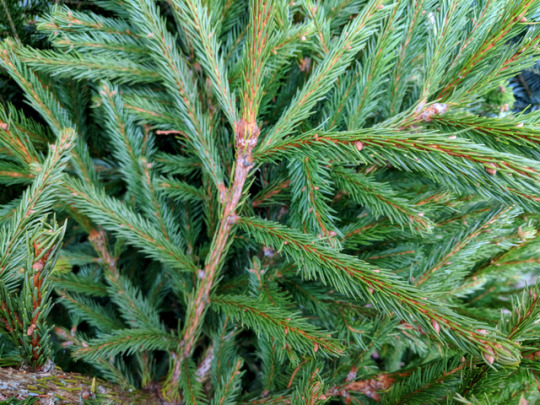
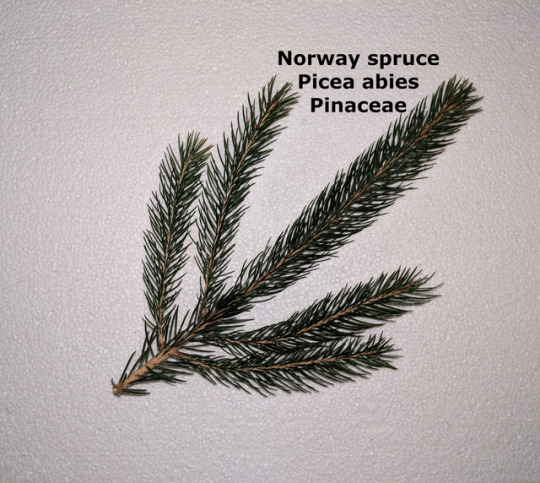
Know your festive conifers
I mentioned before that I started working in a garden centre -I’m so happy my change-of-career plans are already beginning to work!- and today it’s actually been a whole month. This first month there has been decisively marked from the very beginning by the fact Christmas is approaching: my first day happened to be when the main delivery of Christmas trees arrived, so it was entirely spent unloading hundreds of conifers, which we then freed from their nets, separated, measured and finally positioned in their pens during the following days.
Needless to say, I’ve learnt a lot about the most common Christmas trees you could find in a garden centre in the UK this time of the year. I’ve also ended up reading briefly about the tree farming industry and what it entails in the UK, rest of Europe and America with their differences. But this is not meant to be a post about a tradition which is quite new to me -decorating a real cut tree is not nearly as popular in Italy- its history or the industry it supports, so let’s get to the trees.
From top to bottom, they are ordered by their popularity as I’ve experienced it, although most of the stock was of the first two species and we only offered a few of the other three.
1. Nordmann fir Abies nordmanniana, Pinaceae
Very large tree native to the southern and eastern coast of the Black Sea. It’s considered the favourite and the best seller in the UK for two main reasons: it retains its needles, which are soft and have a notched tip, and its spaced layers of symmetrical, almost horizontal, sturdy branches are ideal to accommodate heavy or large ornaments. Especially when young and under 6ft it can look quite wide and bushy at the bottom with a sparse top and often a very long and straight leader.
2. Fraser fir Abies fraseri, Pinaceae
Medium-sized tree native to the southeastern Appalachian Mountains. Also very popular, mostly because it’s sheared in the field to retain a conical shape and this results in a slimmer bottom, ideal for small spaces, and high density of soft branches, which work better with small, light ornaments. The stem and branches seem to grow in a sinuous fashion and the tree often has more than a single central leader tip, which is generally not straight, but twisty too. Its citrus-y sent and the ability to retain its needles help making it a popular choice.
3. Lodgepole pine Pinus contorta, Pinaceae
Medium to large tree or shrub, depending on the subspecies, native to western and north-western North America. As the only Pinus in the list, it looks rather different from the other trees and decorating it can be a challenge, people seem to either love it or hate it, so we only stocked a handful of them. It tends to be quite bushy and, as the name suggests, the trunk can often be twisted. It smells like clean pine forest and is very good at holding its needles.
4. Rocky Mountain fir Abies lasiocarpa, Pinaceae
Generally medium-sized tree which shares its native area with the lodgepole pine in north-western North America. This was a novelty species at the garden centre and we only stocked a few large ones. Most people seemed to love its imposing, but airy and symmetrical structure and blue-grey hue and it’s probably my personal favourite. Its scent is aromatic and as interesting as the colour.
5. Norway spruce Picea abies, Pinaceae
Large tree native to an area spanning from the mountains of southern Europe to Siberia. Most people recognise it as the traditional, old-school Christmas tree, however it has now fallen out of fashion as the worst performing in the list when it comes to retaining its needles. For this reason we mostly stocked pot-grown trees of this species, and just a handful of small, cut ones. The short, thin needles give it a feathery look compared to the others and its structure is similar to that of the Nordmann fir.
Now, just out of curiosity, I’d love to see lists made by my counterparts in the rest of the world! Also, if you have bought a tree, what species is it?
#nordmann fir#abies nordmanniana#fraser fir#abies fraseri#lodgepole pine#pinus contorta#rocky mountain fir#abies lasiocarpa#norway spruce#picea abies#pinaceae#plant identification#plant photography#botany#trees#plantblr#garden centre#work#gardeners on tumblr#conifers#christmas#christmas tree#tree farming#scotland#horticulture
819 notes
·
View notes
Photo

Abies nordmanniana (settembre 2017)
3 notes
·
View notes
Photo

Natale, quanto costano (e chi paga) gli alberi delle grandi città? Città che vai, albero di Natale che trovi. Anche gli addobbi natalizi segnano una marcata differenza di gestione tra i vari comuni italiani. Abeti di oltre 20 metri, luminarie e decorazioni nelle piazze delle principali città italiane forniscono una rappresentazione del funzionamento delle macchine amministrative, della salute delle casse comunali e delle capacità di coinvolgimento dei privati. Un quadro molto variegato che parte da una città come Milano, capace di ottenere una valanga di euro da sponsor privati (2,3 milioni, per l’esattezza), passando dalla Capitale che – con il neo sindaco Roberto Gualtieri – è costretta a investire quasi 170mila euro della casse comunali per l’albero di Natale in piazza Venezia (sperando di scongiurare l’incubo “Spelacchio”), fino ad arrivare a Palermo che a causa dei problemi finanziari è stata protagonista di una corsa contro il tempo per evitare il rischio di festività senza luci e albero. Anche quest’anno Milano è la regina italiana degli investimenti privati. (...) un abete di circa 24 venti metri, illuminato con 80mila luci led a basso consumo e addobbato con 800 palle di Natale rosse e color argento. Il costo è di quasi mezzo milione di euro (precisamente 488 mila) ed è interamente a carico della Gva Redilco & Sigest, società immobiliare che da pochi giorni ha tra i soci di minoranza anche Barbara, Eleonora e Luigi Berlusconi (figli di Silvio e Veronica Lario). Ma Milano non si ferma qui: attraverso altre sponsorizzazioni private, per un totale di oltre due milioni e 375 mila euro, può contare su altri sette alberi di Natale installati in altrettante zone della città. Niente finanziamenti privati, invece, per la Capitale. (...) il nuovo sindaco Roberto Gualtieri, insediatosi il 21 ottobre, si è limitato a fare autorizzare agli uffici del Campidoglio, il 5 novembre, la spesa di 169.336 euro per l’acquisto di un “Abies nordmanniana” di quasi 25 metri per piazza Venezia. (...) Ma lo scopo principale di Gualtieri rimane comunque quello di allontanare lo spettro “Spelacchio”, l’abete che nel 2017 in pochi giorni ha perso gran parte degli aghi. La sua chioma spoglia è stata in grado di sollevare un polverone di polemiche che si è abbattuto sull’amministrazione Raggi. Anche Spelacchio, tra l’altro, era stato pagato interamente con fondi del bilancio comunale. A Napoli è la Camera di commercio a venire in sostegno al Comune. L’albero in piazza del Plebiscito (composto da una spirale luminosa) fa parte del progetto “Illuminano Napoli”, frutto di un bando europeo del valore di 2,2 milioni di euro, che comprende anche le luminarie natalizie installate in quasi 140 chilometri di strade e 36 piazze di Napoli. La Camera di Commercio ha dovuto anche finanziare i consumi dell’energia elettrica delle illuminazioni perché il Comune non aveva i fondi per provvedere autonomamente. Problemi finanziari anche per la città di Palermo che ha rischiato addirittura un Natale al buio e senza addobbi. (...) Per l’amministrazione comunale guidata da Leoluca Orlando è stata una corsa contro il tempo per trovare partner privati o istituzionali almeno per provare a collocare un albero in piazza Castelnuovo. E, alla fine, l’albero sarà installato – entro il fine settimana – grazie al contributo di cinque associazioni di imprenditori (Confcommercio, Confindustria, Confartigianato, Ance e Confesercenti). Un mix tra fondi privati e pubblici è quanto messo in campo dalla città di Torino. (...) Il contributo delle casse comunali alla Fondazione è stato di 47.789 euro a fronte di un preventivo di 184 mila euro. Solidarietà tra istituzioni, invece, per l’abete rosso di oltre 21 metri di piazza De Ferrari a Genova. Nessun peso per le casse comunali, né contributo di soggetti privati. L’albero è stato, infatti, donato alla Regione Liguria dalla Regione Lombardia (...) Un dono di Attilio Fontana a Giovanni Toti. di Salvatore Frequente
4 notes
·
View notes
Note
Do you have any iwaoi fic recs, something underrated is good!!
Let’s see...
I’ve read so many iwaoi fics that I honestly have a hard time choosing what to recommend, because there are so many great ones and I could easily recommend you at least a 1000 iwaoi fics to read, but let’s not go there haha... For now, I will just rec you some fics that I think are (more or less) underrated and can remember by the title at the moment.
These are all older fics. I might rec some newer ones when I have more time to go through all my saved fics...
1. time and the days by sundowns
2. alo(v)e you vera much by safra
3. cakes, s’mores and flower parfaits by akira_kun
4. seven-year itch by afuzzyowl
_______________________________________
+ bonus
These are not really underrated, but I love these fics a lot and I’ve read them countless of times through the years so I wanted to include them! Also check out the “fanfic rec” tag on my blog, it has more (older) fic recs!!
- iwaoi fics by loveclouds (I love them so much and can't recommend them enough!! Honestly read them ALL if you haven’t already)
- iwaoi fics by hyeyu
- by chance by crossbelladonna (also check out their other works!!)
- and suddenly, we were strangers by izayas
- terrarium by sausaged
- the courtship ritual of the hercules beetle by kittebasu
- mind reader by jopling
- here comes your man by newamsterdam
- have mercy on me by hiuythn
- super spy husbands (series) by leurauxe
- what?! by akira_kun
- tokyo boy by verbrennung
- mint by tothemoon
- 3.5 millimeters by varient
- abies nordmanniana by varient
#fanfic rec#iwaoi#haikyuu!!#I'll add more fics later if I remember to#there's just so many I have a hard time choosing without adding like 100 fics to the list
12 notes
·
View notes
Text






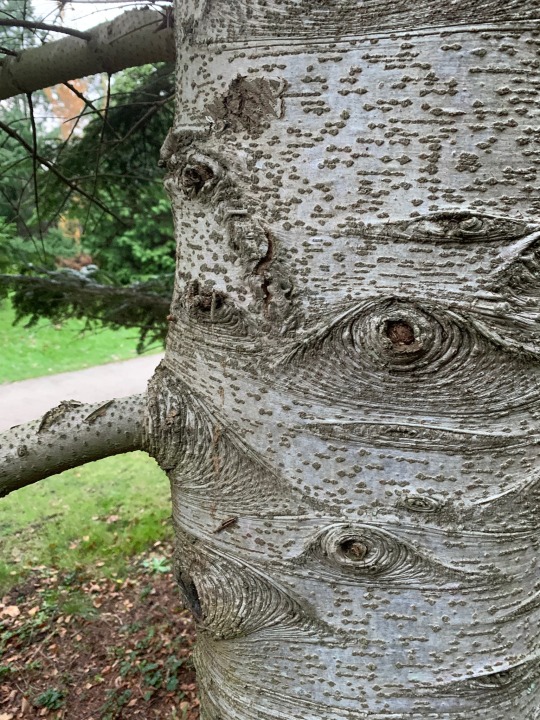

Tree stems that I think look pretty!
1. Prunus serrula
2. Betula utilis ssp. (subspecies) jaquermontii ‘Doorenbos’
3. Prunus maackii
4. Metasequoia glyptostroboides
5. Fagus sylvatica
6. Pyrus communis
7. Abies nordmanniana
8. Fraxinus excelsior
#I do know their names in Swedish but could not be bothered to find the English names#landscape architecture#mine#trees#plants#nature
1 note
·
View note
Text


10/26/20
#nordmann fir#Abies nordmanniana#conifer#tree#plant#state champion#virginia state champion#pinopsida#pinales#pinophyta#pinaceae
0 notes
Photo

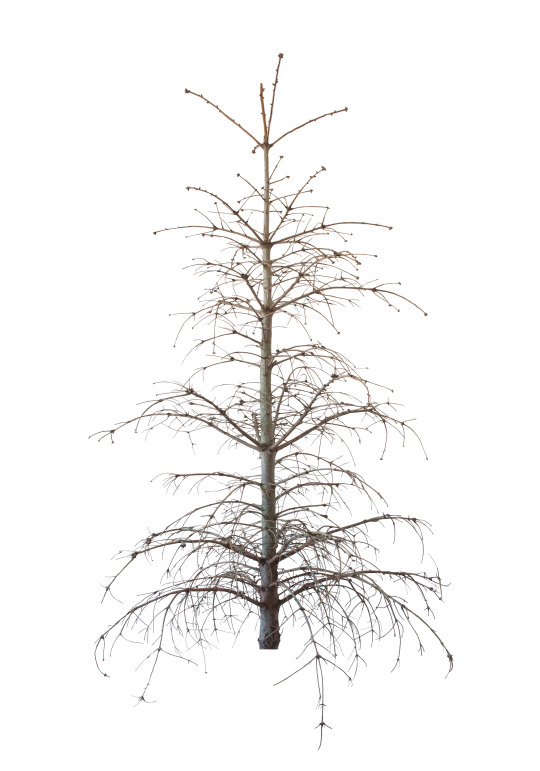
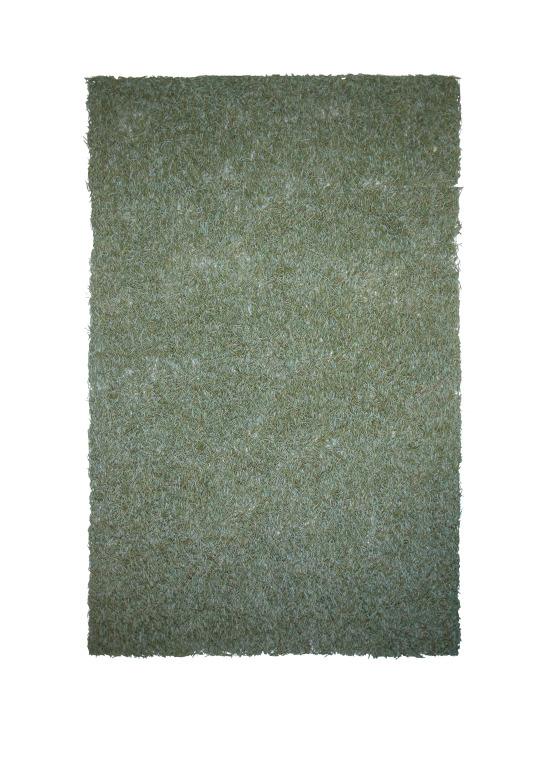
After Christmas tree documentation
trunk: 1
needles : 174 000
name: Abies nordmanniana
year: 6
height: 186 cm
weight: 1900 g
Iana Koroleva
0 notes
Photo
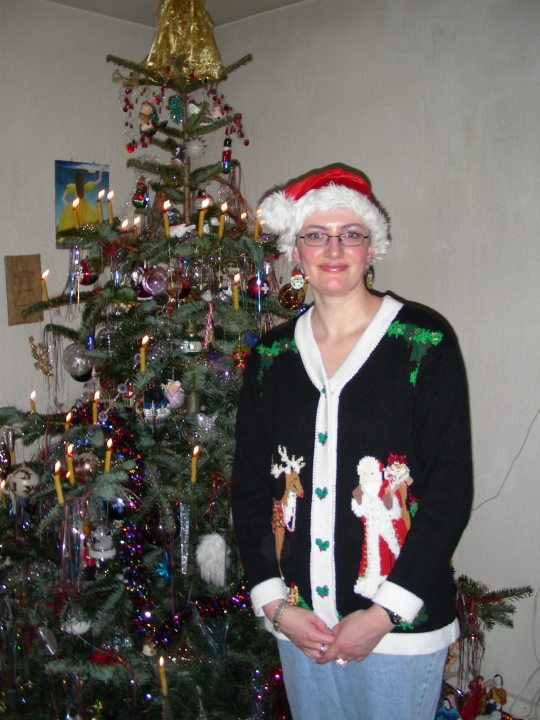

National Ugly Christmas Sweater Day
Lurking in the murky depths of many people’s wardrobes is a colorful, brash and (in most cases) highly embarrassing novelty Christmas jumper which, were it not for National Ugly Christmas Sweater Day, would probably never see the light of day.
When National Ugly Christmas Sweater Day comes along, it’s time to stop being ashamed of the contents of your (likely gifted) wardrobe and start busting out the ugly. There is such a thing as ‘so awful you can’t really hate it’ (the nether-regions of Netflix has multiple movies that fit these criteria), and Ugly Christmas Sweaters fit the bill in your wardrobe.
So, it’s time to forget that buttoned up look at work and opt for a relaxed, ridiculous, and possibly even irreverent version of this festive, jubilant attire!
History of National Ugly Christmas Sweater Day
It wasn’t so long ago that ugly sweaters were worn either accidentally (by well-meaning party-goers) or ironically (by hipsters making fun of the previous generation).
Maybe the snowman with the 3D carrot nose was meant only to appease Aunt Martha who gave it as a gift the previous year. Or perhaps the sweater featuring Santa’s sleigh—and bells that actually jingle-all-the-way—was gleaned from a holiday gift exchange and worn in desperation after spilling eggnog all over a tasteful silk shirt.
Launched in 2011, this annual celebration, which is growing in popularity every year among adults and children, is not simply an excuse to parade humiliatingly-unfashionable seasonal knitwear featuring Rudolph, Christmas puddings and Frosty the Snowman; it can also be a light-hearted and enjoyable fundraising event with a serious aim—in aid of Save the Children.
Since then, this day has become an important event that drives charity funds for organizations that help children around the world deal with severe illnesses. The firm belief that children shouldn’t die from easily treated diseases is what brings this holiday to the fore.
And so, many people subject themselves to a minor harmless ailment, the sight of these hideous sweaters, to help save the children from medically complicated situations.
How to celebrate National Ugly Christmas Sweater Day
In schools, colleges and offices, Christmas jumpers are donned to raise money for the global charity that works to combat premature death among children from easily preventable diseases such as diarrhea, malaria and pneumonia. The organization’s mission is summed-up in the slogan ‘No Child Born to Die’.
So, if you want to celebrate National Ugly Christmas Sweater Day, then dig into your wardrobe, and organize a day among friends and co-workers to assault the eyes of everyone around with the garish and uncomfortable designs of Christmas Sweaters!
One fun activity is to organize an ‘Ugly Sweater’ auction, where everyone wears their worst sweaters, and other people bid to have them take them off. It’s amazing what people will pay to stop a grisly assault on their eyes!
For the trolls in the audience, the rules can include a counterbid by people seeking to have the sweaters remain, with the hope of continuing to torment friends and co-workers for the rest of the day.
As the ultimate finale to this event, it’s a great idea to take all the sweaters that have been auctioned ‘off’ of their wearers, and burn them in effigy to these awful emblems of the holidays. The proceeds obviously go to a worthy charity. (However, this might not be possible as easy as it sounds, since these absurd garments are often made of synthetic materials which may be more likely to melt than actually burn!)
Alternatively, if a creative group of people has the skills to produce a sweater, it is always possible to organize an actual auction early in the season. People bring their own holiday designs, auction them off in a silent auction, and donate the proceeds to a charity of choice. And the winners can then sport their newly-acquired ugly items at their next holiday event. It’s a win-win!
How to win at National Ugly Christmas Sweater Day
Some folks may be wondering exactly what constitutes “ugly” when it comes to this silly day. The good news is that almost anything goes on this rollicking day that is intentionally meant to offend both good taste and common sense!
Customizing is key. For those who are creatively inspired, it’s easy to start with something basic (like a red sweatshirt) and turn it into a glorious display of festive hideousness. With a hot glue gun and some simple craft supplies, even the most boring, non-festive shirts can become an enviable work of awful (and awe-inspiring!) art.
The more outrageous, the better. Glitter and sequins can always be counted on to add that special touch. Or take it to another level with a battery-powered, light-up garment (say, Rudolph’s famous red nose) that offers a leg-up on the competition.
Accessories add class. Some ugly sweater events are judged on more than just the merits of the individual sweater. Adding a bit more pizzazz to the outfit, such as a Santa hat or Reindeer antlers, can transform a marginally ugly pullover into a dazzling display of merry-ness.
Shop year-round. For those who are extra committed, year-round shopping for festive garb is the best way to score unique pieces. Keep an eye out in charity shops, thrift stores, and even garage sales. Sort through your grandma’s attic to find not only ugly sweaters, but also bits and bobs that could be used to decorate one in an outrageous manner.
Of course, buying a pre-decorated sweater off the rack is also possible beginning around October and lasting through the end of the year. Even better, picking one up on sale in January can save some money and hassle for when the season comes around again. It’s true that National Ugly Christmas Sweater Day tends to bring to the highest level all things tacky, kitschy and….well, ugly. Even so, there is something endearing about what has morphed into ‘ugly sweater chic’. Whether celebrating as a family, a group of friends, or in the workplace, this day stands out as a fun, festive way to out-ugly the ugliest!
Source
#National Ugly Christmas Sweater Day#NationalUglyChristmasSweaterDay#17 December#older pics#Christmas Eve#Christmas Tree#puppy#pet#Sushi#English Bulldog#my brother's dog#sorry but I love Christmas sweaters#real fir#real beewax candles#Abies nordmanniana#Nordmann fir#Caucasian fir#indoors#24 December#25 December#Christmas
2 notes
·
View notes
Photo

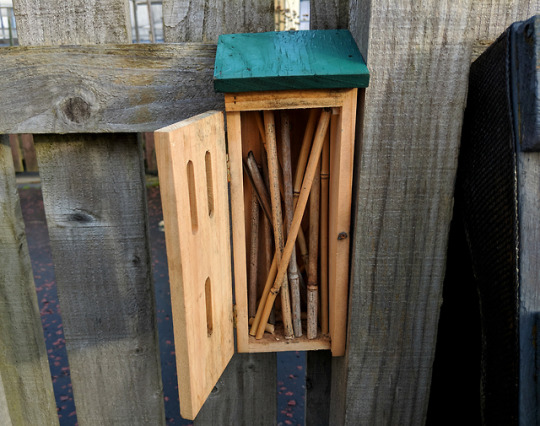


How I recruited a small army of ladybugs
In my last post, a reblog from last year, I mentioned the cut conifers to be sold as Christmas trees had started arriving at the garden centre where I work, but together with the trees we also received some visitors.
As of October, ladybugs (Coccinella septempunctata) begin congregating in sheltered places to spend their winter dormancy period, a time when their mobility and activity level are strictly dependant on the temperature, and it seems a large number of them had chosen the dense, evergreen foliage of the Nordmann firs (Abies nordmanniana) to do so. Whenever I would free a tree from its net, shaking it, several ladybugs (as well as a variety of spiders) would fall to the floor, suddenly thrown out of their cosy temporary home.
I collected and placed dozens of them around the garden centre, where they will be valuable allies in my battle against aphids next year, but I also decided to relocate some of them to my allotment. I had one of those boxes sold as “butterfly houses” installed on a south-facing portion of the fence, and I thought it could serve well for the purpose of giving them shelter, so I filled it with some bamboo sticks and placed them inside to see what they would do.
They seem to find it suitable, the following day the box was still full and the majority had climbed up to rest under the roof. If all goes well, they will spend the winter there, and when they emerge they will find the place to be a good breeding site, which will also, inexorably, be filled with food for them.
Aphids, mites and all of you, soft-bodied insects, cower before my army now!
#coccinella septempuntacta#coleoptera#ladybug#ladybird#beetles#insects#entomology#biological pest control#predatory beetles#plantblr#horticulture#gardeners on tumblr#allotment gardening#garden centre#my work#scotland#vegetable garden#grow your own#insect hotel
2K notes
·
View notes
Text
Pine Forest on Tree-Line Ecotone in the Mountain Kazbegi in the Georgia (South Caucasus)-Juniper Publishers

A widely distributed species of the pine in Georgia is - Pinus kochiana in the Caucasus Mountains. Central Great Caucasus higher is 5047m of Mt. Kazbegi and many summits are higher than 4000m. Caucasian pine from 300 to 2600m above of alpine tree line ecotone. Caucasian Pinus kochiana is on slopes from 784-2417m. Forest degradation will be activated to climate change in alpine zone and forest restoration is for protection of the environment. Other, planted pine species are migrated from Russia in Georgia in 1970s and this is mainly Pinus sylvestris. Pinus kochiana is synonym and accepted name is Pinus sylvestris var. hamata Steven. Other synonym names of this species are Pinus sosnowskyi, Pinus caucasica, Pinus hamata, Pinus kochiana var. parviflora, Pinus sylvestris subsp. kochiana, Pinus sylvestris var. kochiana. Forests occupy 32-35% of the territory of Georgia. The riparian and marsh forests occur in all regions of Georgia. The number of chromosomes in Pinus kochiana was precisely reported as 2n=24 and no mutation has been found. Forests were destroyed and burned by Kazbegi district during the wars in old centuries. Scots pine (Pinus sylvestris L.) is planted in degraded areas. Flowering period of this species is April-May and seeds are matured in September-October. Caucasian pine rock scree forest is distributed on the slopes of rocky southern exposition dry ecotone or limestone layers.
Keywords: Pinus; Subalpine; Forests; Synonym; Accepted
Introduction
Georgia covers an area of 69 494 km2. Forests cover are mountain forests spread from the lower mountain belt up to the tree line ecotone the highest summits of the Caucasus. Elevation range of the Caucasus Greater Mountains varies from sea level to 5633m of Mt. Elbrus. Western Great Caucasus in Georgia has a highest peak 5068m of Mt. Shkhara and Central Great Caucasus higher is 5047m of Mt. Kazbegi and many summits are higher than 4000m [1,2]. Thus, the alpine and subalpine belts are here much wider, and the possibilities for high mountain forest growth and diversity are greater. In addition to their ancient isolation, the differences within their high mountain forest have also been influenced by the following factors. Forest degradation will be activated to climate change in alpine zone and forest restoration is for protection of the environment. It presents a great variety of widely contrasting landscapes due to geological, geomorphological, hydrological, climate and soil conditions and frequently alternating and ranging from subtropical forests to Desert Steppes from Black Sea to the east. The western region Kolkhis has a subtropical climate, with a warm winter. In sharp contrast to this region is eastern and southern Georgia with a nearly continental climate. The vegetation in Kolkhis is represented by wetlands, forests and even dense subtropical forests, in high mountains (western and eastern Georgia) tree line ecotone and alpine meadows followed by the nival ecotone are representative; southern Georgia is covered by secondary mountain steppes occupied area of primary forests growing in this area in the past; arid and semi-arid vegetation is widely spread in the eastern Georgia. Most typical of these include semi-deserts (with desert spots), steppes, vegetation of dry canyons, hemixerophilic shrub lands, foothill deserts, and dry open woodlands [3,4].
A widely distributed species of the pine in Georgia is - Pinus kochiana Klotz. ex K. Koch. (synonyms Pinus hamata, Pinus sosnowskyi). Accepted species is Pinus sylvestris var. hamata Steven. Caucasian pine (Pinus kochiana) composed in the mountains from 300 to 2600m above of alpine tree line ecotone. Forests were destroyed and burned by Kazbegi district during the wars in old centuries. Scots pine (Pinus sylvestris L.) is planted in degraded areas. Caucasian pine is distributed on the slopes of rocky southern exposition. Scots pine grows in different slopes. These two pine species have the same 6 ectomycorrhizal fungal species and can growing in similar soils. In west Georgia it is mixed with coniferous forests, the pure stand is only in rocky locations. Vertical borders on the distribution of the pine forest are from 700 to 2400 meters a.s.l.. Optimum conditions for the distribution are at the altitude of 1000-2200 meters. In certain places pine is found at the altitude of 2500-2600 meters. The pine grows both on limestone and volcanic layers. The pine rocky forest is especially distinguished in terms of the great variety of species [5].
The pine forest of limestone on Tetrobi-Chobareti range (1800-2000 meters) is characterized by a slightly different composition. Earlier the pine distribution here was considered as endemic Pinus kochiana, whereas a more widely distributed was called “Sosnowski pine” (Pinus sosnowskyi). At the moment they are considered as one species. However, the Tetrobi pine forest according to the composition is considered as a peculiar refugium where pine is mixed with mountain steppes. In this community overall 48 species of vascular plants are represented. The following species of herbaceous plants are associated with Pinus kochiana: Steven arenaria - Arenaria steveniana, Sosnowski chickweed - Cerastium sosnowskyi, Voronov minuartsia - Minuartia woronowii, caryophylaceae campion - Silene dianthoides, Sosnowski houseleek - Sempervivum sosnowskyi, astragalus - Astragalus arguricus, A. campylosema, Javakheti lucerne - Medicago dzhawakhetica, sun rose - Helianthemum nummularium, H. orientale, Transcaucasian Daphne - Daphne transcaucasica, prickly thrift - Acantholimon glumaceum, hogweed - Heracleum antasiaticum, bedstraw - Galium grusinum, cornflower - Centaurea bella, hawksbread - Crepis pinnatifida, grapevine hyacinth - Muscari sosnowskyi, etc. This phytosenosis is quite rich with endemic species that are mainly common on the limestones of the tetrobi plateau. Diphelypaea coccinea (the blooming parasite) and asphodelo - Asphodeline taurica need to be mentioned especially [6,7].
These range from the obvious timber to mushrooms, berries and edible plants that have become more important for rural populations during economic hardship. From soil and watershed protection to recreation, tourism, and the existence value associated with the conservation of biological and landscape diversity of forests. Pine forests yield excellent construction and carpentry timber, fuel, tar, resin, pitch, black or marine tar, carbon black, turpentine, essential turpentine oil, and colophony.
Materials and Methods
Caucasian pine trees growing in slopes with all exposition and are oriented as well on high inclination till 900. Natural habitat of this species is oriented on rocks and as well on other slopes with different geological rocks. The elevation is from 0 to 2100m a.s.l. Caucasian pine tree up to 35m tall and only to 15-20m high in Kazbegi high mountain areas. Snow cover is <0.3m. Sunny edge is low on North Slope; dappled shade is more not only on North Slope: North Wall, East Wall, and West Wall. Suitable for: light (sandy) and medium (loamy) soils, prefers well-drained soil and can grow in nutritionally poor soil. Suitable pH: acid, neutral and basic (alkaline) soils and can grow in very acid and very alkaline soils. It can grow in semi-shade (light woodland) or no shade. It prefers dry moist or wet soil and can tolerate drought. The plant can tolerate maritime exposure. It can tolerate atmospheric pollution.
Plant material
Forests occupy 32-35% of the territory of Georgia. The riparian and marsh forests occur in all regions of Georgia. Mountain forests are represented by lower, middle and upper belts. Oak, beech (Fagus orientalis) and beech to chestnut forests grow in the lower and middle belts changing higher in the mountains into the Caucasian fir (Abies nordmanniana) and Oriental spruce (Picea orientalis) forests. Pinus kochiana, Acer trautvetteri or Quercus macranthera grow at tree line ecotone in different regions. There are also well-developed crooked stem birch forests (Betula litwinowii) in the tree line, usually occupying the steepest northern slopes. Dry open woodlands relict forests are to be found in semi-arid regions of the eastern Georgia and are composed by Pistacia mutica, Juniperus spp., Pyrus spp., etc. Methodology Forested land in Georgia occupies 2.773.400ha. About 2.2 million ha are classified as state forest under the responsibility of the Department of Forest Management (DFM) and the remaining consists of former “Kolkhoz lands” part of which are now in the process of being transferred to the DFM [8]. About 98% of forest is located on the mountain slope. There are about 400 species in forests, among them are: trees 153, high shrubs 202, low shrubs 29, and lianas 11. Conifers are 11 species belonging to three families Pinaceae (4), Taxaceae (1) and Cupressaceae (6). 81% of total forest area is occupied by broad-leaved forests of Beech, Georgian and high mountain oak, hornbeam, chestnut, ash, maple etc. 19% is coniferous forest composed by Caucasian fir (8.5%), Oriental spruce (5.8%), Caucasian and Bichvinta pines (4.7%), yew and juniper species.
Approximately 208.000ha of forest areas were included in the Protected Areas, which amounts to 7.5% of the total forest area of Georgia. According to the “Forest Code of Georgia” a number of forest categories are subjected to some restrictions, which allow us to consider them as Protected Areas. The calculated area of “protected forest categories” (resort, green zone, steep slope, tree line and riparian forests belong to the corresponding IUCN categories; V, V-VI, IV-V, IV-V, IV-V) amounts to 1.113.130ha, which is almost 15.9% of Georgia’s territory.
Statistical analyses
The analysis was performed using the software packages SPSS v.16.0 for Windows and Statistical 6.0. We used ANOVA (p<0.05) post hoc range test to investigate whether the average soil T °C, minimum soil T °C, June minimum T °C and GDD changed in the 1m x 1m quadrates from 2012 to 2018. We used Canonical Component Analysis (CCA) of the species cover in 1m x 1m permanent plots and Dominance Curves test of PCORD. 5 statistic program in order to test the species composition and determine dominant species on each summit. The species are ranked by cover and abundance.
Results and Discussion
Georgian pine species
Pinus kochiana Klotzsch ex K. Koch is a species of the Caucasus Mountains and this is synonym from other same (Table 1) and it is related to the Scots pine group with accepted name as Pinus sylvestris var. hamata Steven. Other synonym names of this species are Pinus sosnowskyi, Pinus caucasica, Pinus hamata, Pinus kochi ana var. parviflora, Pinus sylvestris subsp. kochiana, Pinus sylvestris var. kochiana. Coniferous forest has 19% territories and composed by 8.5% of Caucasian fir (Abies nordmanniana), 5.8% of Oriental spruce (Picea orientalis), and 4.7% of and Bichvinta (Pinus pityusa) pines. Coniferous forests mainly composed in the Western Georgia of fir, spruce and The Central and Eastern Great Caucasus contains only Caucasian pine and some species of Cupressaceae. The number of chromosomes was precisely reported as 2n=24 and no mutation has been found. It is the species related to the European pine (Pinus sylvestris L.). P. sylvestris is located in north areas of the Europe and Asia and it has many subspecies and varieties. However, P. sylverstris has different number of chromosomes – 2n=18; 24; 25; 36; 48. It is used as planted tree and it is used for multiplication in nursery which might be used by chromosome number change. Morphologically P. kochiana has different structure of cones (Figure 1A & 1B) to P. sylvestris (Figure 2A & 2B). Therefore, it might be remained as other species. Caucasian pine tree grows till 35 m in the subalpine zone and leaves stiff, straight or slightly curved, mucronate, glaucescent, 3-7cm long and 1-2mm broad; male cones dense, ovoid-conical, the scales slightly denticulate on the margin; ovulate cones solitary or in 2’s-4’s, at first green, turning reddish-brown, at length brownish-gray, ovaloid/ spherical, recurved, lustrous, 1.5-5.5cm long and 2-4cm broad at base; epiphysis subrhombic, rugose, flat or pyramidal, the umbo of scales on the illuminated side of the cone produced into a hooked spine; seeds 4-5mm long, the wing 13-15mm long and 4-5mm broad.
Coniferous forest areas
Caucasian pine from 300 to 2600m above of alpine tree line ecotone. Caucasian Pinus kochiana is on slopes from 784-2417m (Table 2). The area of its common distribution is Caucasus, Crimea and western part of small Asia, Ponto mountains. In Georgia pine forests are mainly common in the mountains. The pine grows in Kazbegi District on rocks of volcanic layers. The pine rocky forest is especially distinguished in terms of the great variety of species. Caucasian pine rock scree forest is distributed on the slopes of rocky southern exposition dry ecotone or limestone layers. Forested land in Georgia occupies 2.837.900 ha which is a 43.18% of Georgian territory (69494 km2). About 98% of forest is located on the mountain slopes. 81% of total forest area is occupied by broadleaved forests of beech (Fagus orientalis), Georgian and Caucasian oak (Quercus iberica, Q. macranthera), hornbeam (Carpinus caucasica), chestnut (Castanea sativa), ash (Fraxinus excelsior), maples (Acer spp.), etc. North Ridge Mountains of the Central Great Caucasus mainly created with crooked steam forests/elfin woods of birch species (Betula litwinowii, B. raddeana, etc.) Caucasian oak and pine are on south and eastern slopes as subalpine forest till alpine tree line.
Native subalpine pine forest
The pine forests are widely distributed in the Caucasus Mountains. The forests of Kazbegi National Park are located on steep slopes (4790ha). Birch forest is covered in 2595ha and native subalpine pine forest (369ha) is located in protected area of north ridge of Central Great Caucasus. 105 species of wood plants can be found in these forests. Dominant species of the subalpine pine forest is Caucasian pine (Pinus kochiana) distributed in many areas of Georgia. Other trees are Quercus macranthera, Fagus orientalis, Juniperus spp. etc. Mountain pine forests of relatively dry ecotones can be found almost everywhere within the distribution area of P. kochiana. It is best to sow the seed in individual pots in a cold frame as soon as it is ripe if this is possible otherwise in late winter. A short stratification of 6 weeks at 4 °C can improve the germination of stored seed. Plant seedlings out into their permanent positions as soon as possible and protect them for their first winter or two. Plants have a very sparse root system and the sooner they are planted into their permanent positions the better they will grow. Trees should be planted into their permanent positions when they are quite small, between 30 and 90cm. We actually plant them out when they are about-10cm tall. So long as they are given very good weed excluding much, they establish very well larger trees will check badly and hardly put on any growth for several years. This also badly affects root development and wind resistance. Cuttings. This method only works when taken from very young trees less than 10 years old. Use single leaf fascicles with the base of the short shoot. Disbudding the shoots some weeks before taking the cuttings can help. Cuttings are normally slow to grow away.
Reproduction and growth characteristics
Caucasian pine tree with whorled branches and two types of shoots: Long shoots appearing in spring and becoming woody, and dwarf shoots growing from the axils of scale-like leaves and also bearing scale-like and true acicular leaves, in clusters of two, three, or five. Caucasian pine has crown wide, twigs spreading and directed upright. Bark dark greyish dark browns or dark browns. Needles greyish-green, margins fringed, 3.5-5 or 5-8cm long, to two, rarely to three of tree. Leaves in clusters of two or three; Male cone is round or oblong-cylindrical, clustered into globose or broadly ovoid racemes. Male strobilus develops at the base of young long shots in the axils of scale leaves. Female cones woody, maturing in two to three years, bract scales coriaceous, shorter than the broad ovuliferous scales; seeds winged, less often nutlike, wingless. Female cones opening at seed maturity; mature female cones 3-7cm long, dull, light brown or gray 6 seeds winged 4. Seed cones ovate, solitary, pink brown or yellowish when mature, glossy, directed horizontally or upright. Seed scales with pyramidal and hooked apophysis. Seed obovate, acute, 4.5mm long, wing with brown stripes. Needles persisting for four to eight years, yellowing in winter, 3-3.5 cm long; cones 3-3.5cm long. Flowering period of this species is April-May and seeds are matured in September- October. It forms woods forests or grows as single trees on rocks, reaches tree line.
Forest degradation and restoration
The degradation of qualitative consistence and productivity of the forest lead to the reduction and sometimes even caused loss in the functionality of forests. Forest area was diminished in the Kazbegi district due to anthropogenic factors such as fires, cutting of trees, and uncontrolled grazing. Forests were destroyed and burned by Kazbegi district during the wars in old centuries. As a result, avalanches and landslides are happening quite often in the mountainous regions. They are mainly located on steep slopes of Great and Minor Caucasus where the access is restricted. The loss of diversity and changes in species composition in forests is mainly a result of anthropogenic influence. Therefore, the degraded forest should be restored, and climate change will be ended. Other, planted pine species are migrated from Russia in Georgia in 1970s and this is mainly Pinus sylvestris L. and some other individuals’ P. nigra subsp. pallasiana (D. Don) Holmboe. These planted species are in all regions, from the subarctic to the forest steppe zone, it forms pure pine forests in the mountains, on sandy soils of the plains and mixed forests on loamy soils and podzols
Conclusion
Caucasian pine forms forests or grows as single trees on rocks. They occur on skeletal and poorly developed soils of prominent southward slopes. These pine forests are characterized by rich and diverse ground vegetation. The pine rocky forest is especially distinguished in terms of the great variety of species. Caucasian pine rock scree forest is distributed on the slopes of rocky southern exposition dry ecotone or limestone layers. These range from the obvious timber to mushrooms, berries and edible plants that have become more important for rural populations during economic hardship. From soil and watershed protection to recreation, tourism, and the existence value associated with the conservation of biological and landscape diversity of forests. P. kochiana pine forests yield excellent construction and carpentry timber, fuel, tar, resin, pitch, black or marine tar, carbon black, turpentine, essential turpentine oil, and colophony. The foliage yields 170 so-called pine- wool and bedding litter; young shoots have medicinal use. The pollen is used in pharmacies as a substitute for lycopodium.
To know more about Journal of Agriculture Research- https://juniperpublishers.com/artoaj/index.php
To know more about open access journal publishers click on Juniper publishers
0 notes
Photo
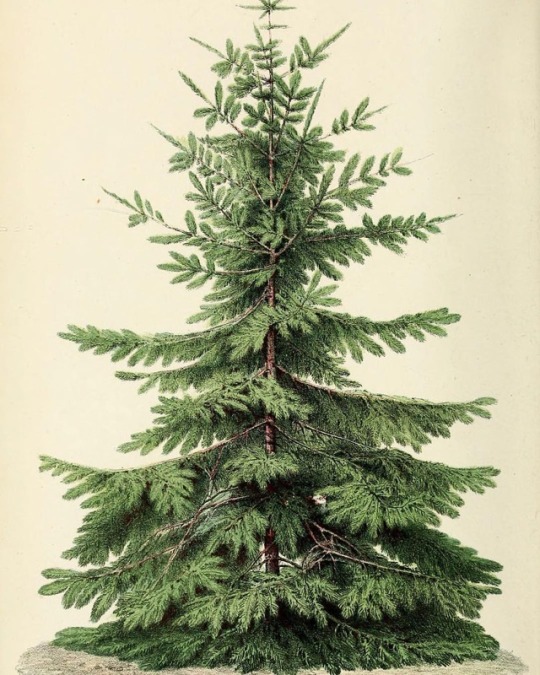
Arbor Day!
It's Arbor Day -- a day to celebrate trees! Nordmann Fir (Abies nordmanniana) from Neerland's Plantentuin, Vol. 1 (1865) by Cornelis Antoon Jan Abraham Oudemans. Contributed for digitization by University Library, University of Illinois Urbana-Champaign.
#naturalhistory#arborday#tree#openaccess#firtree#scientificart#sciartfix#bhlib#biodiversityheritagelibrary#biodiversity#scientificillustration#librariesofinstagram#nordmannfir#trees
17 notes
·
View notes
